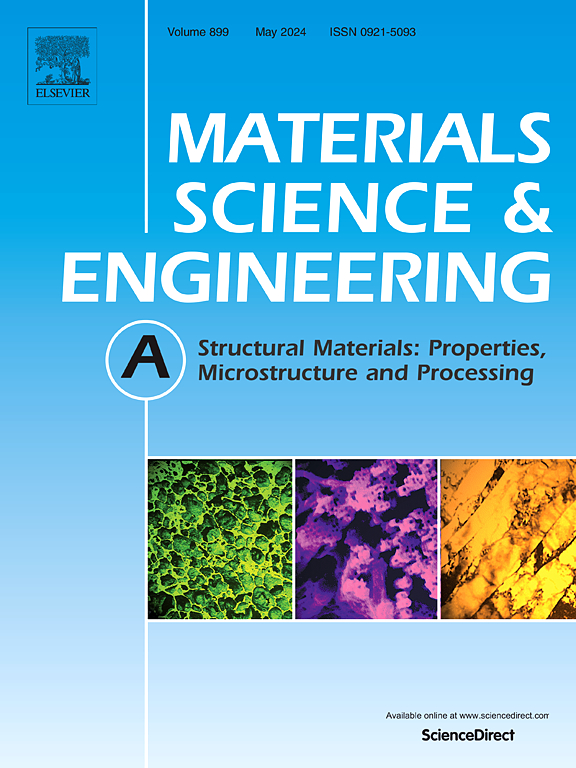Achieving advanced isotropic mechanical properties in a novel L-DED near-α titanium alloy with synergistic alloying modification of Si and B
IF 6.1
2区 材料科学
Q1 MATERIALS SCIENCE, MULTIDISCIPLINARY
引用次数: 0
Abstract
High-temperature titanium alloys are ideal for extreme environments due to their lightweight and high strength at elevated temperatures. Laser direct energy deposition (L-DED) enables the production of high-performance, complex high-temperature titanium alloy components, offering significant potential in the aerospace sector. However, the significant anisotropy in the deposit, caused by the presence of epitaxially grown columnar β grains, severely restricts its further application. Although isotropy has been achieved in L-DED Ti or Ti6Al4V using eutectoid elements, the high-temperature service conditions limit their applicability. This study used a synergistic alloying modification of Si and B to promote the columnar to equiaxed transition (CET) of β grains in L-DED near-α titanium alloy Ti6242S. The effects of Si and B alloying on microstructure evolution and both room- and high-temperature mechanical properties were analyzed. Si and B exhibit a notable mutual replacement effect in promoting CET. The synergistic modification of Si and B effectively prevents the formation of silicide and TiB by reducing their individual contents. Fully equiaxed β grains were achieved in L-DED Ti6242S-0.16Si-0.05B alloy deposit, which exhibited a high yield strength of approximately 900 MPa and 13 % elongation at room temperature. The high-temperature yield strength at 480 °C reached 590 MPa, and the step-creep rupture life increased significantly for the Ti6242S-0.16Si-0.05B alloy deposit at 525 °C under 480 MPa–680 MPa.
求助全文
约1分钟内获得全文
求助全文
来源期刊

Materials Science and Engineering: A
工程技术-材料科学:综合
CiteScore
11.50
自引率
15.60%
发文量
1811
审稿时长
31 days
期刊介绍:
Materials Science and Engineering A provides an international medium for the publication of theoretical and experimental studies related to the load-bearing capacity of materials as influenced by their basic properties, processing history, microstructure and operating environment. Appropriate submissions to Materials Science and Engineering A should include scientific and/or engineering factors which affect the microstructure - strength relationships of materials and report the changes to mechanical behavior.
 求助内容:
求助内容: 应助结果提醒方式:
应助结果提醒方式:


